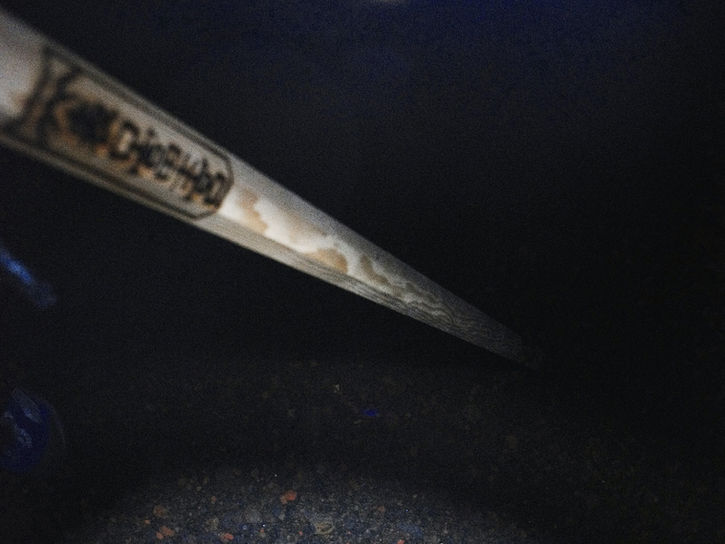SHINGO YOSHIDA
Seeking Hidden
© 1999 - 2024 Studio SHINGO YOSHIDA. All rights reserved.
頂上 -The Summit -
FILM | PHOTOGRAPHY
Location: Mt.Fuji, Japan
Photo & Recording Date: July 2019
Film Release: March 2020
Duration: 14 min 32 sec
Format: 4K ProRes 422 HQ
Music Composed:
Satoshi Ikeda, Shingo Yoshida
Film Text Translation:
Jaime Humphreys, Satoshi Ikeda
Supporters:
LOKO Gallery, Kazuhide Miyashita, Kikujiro Yoshida
Synopsis
English :
[On August 20th , Shōwa 49 (1974), a stone tablet inscribed with a haiku was set atop Mt. Fuji. This was my father’s near-reckless project, to fulfil
the dream of my grandfather who was a haiku poet, —to bring a stone tablet to Kengamine next to the observatory on Mt. Fuji, the highest peak of Japan
worshipped as its symbol from ancient times.]
Français :
Le 20 août de l'année Shōwa 49 (1974), une stèle portant un haïku a été installée au sommet du Mont Fuji. Ce projet presque téméraire était celui de mon père, qui voulait réaliser le rêve de mon grand-père, poète de haïku, d'apporter une stèle à Kengamine, à côté de l'observatoire du Mont Fuji, le plus haut sommet du Japon, vénéré comme son symbole depuis les temps anciens.
日本語:
昭和49年8月20日、富士山頂にひとつの句碑が建立された。それは、古来より崇められてきた日本の象徴である最高峰に、
俳人であった祖父の夢を叶える為に、測候所の脇の剣ヶ峰に句碑を運び上げる、無謀ともいえる父親のプロジェクト。
・・・・・・・・・・・・・・・・・・・・・・・・・・・・・・・・・・・・・・・・・・・・・・・・・・・・・・・・・・・・・
“The Summit”
A video and three photographic works from the series
Text: Wibke Schrape ( MK&G )
Shingo Yoshida documents and stages a father-son-grandson story in his video work and photo series "The Summit," connecting his own biography with the history of modern haiku poetry and Japan's national symbol – Mount Fuji.
The grandfather was a student of the renowned haiku poet Yamaguchi Seishi (1901–1994) and dreamt of a haiku memorial stone on Mount Fuji. After his death, his son realized this wish in 1974 with the help of the weather station team on the mountain, operating in a legal gray area:
The state, Shizuoka Prefecture, Yamanashi Prefecture, and Asama Shrine all claimed the mountain as their property. But can a mountain sacred in Shintōism and a national symbol truly belong to anyone?
Shingo Yoshida once again ascends the mountain, filming his nocturnal climb, the sunrise from the mountain, and integrates documentary photos and videos of the erection of the haiku memorial stone into his film. Poetic images familiar to even European viewers from Hokusai's color woodcuts blend with close-ups of a typical pilgrimage and stark views of construction equipment, the technology of the weather station, and the celebration of collective success against all conventions.
The video and photos capture both the poetic atmosphere and fascination that viewers inevitably experience when the snow-capped peak emerges from the sea of clouds behind Tokyo and simultaneously document a literary-motivated action that contradicts all clichéd perceptions of life in Japan, dominated by rules and regulations.
The work was acquired for the new collection presentation East Asia for the module "Themes of Japanese Design". Mount Fuji, as a motif and theme, is a primary focus of the space. The series of 36 views of Mount Fuji by Katsushika Hokusai (1760–1849) was central to the development of the idea of a national landscape in the 19th century. In the 20th century, Hokusai's "Great Wave" evolved into a global icon.
Since the triple disaster of 2011, the image has been increasingly used for nation branding campaigns, but now primarily targeting non-Japanese. Shingo Yoshida's work offers a fresh perspective on the sacred mountain and its treatment as one of the most visited and photographed peaks in Japan.
The work continues the tradition of literary-motivated images of famous places (meisho-e) but also reflects a simultaneously personal and distant view.
























